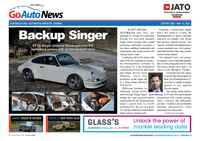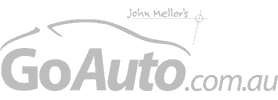Make / Model Search
News - VFACTS - Sales 2025VFACTS: May sales down on 2024…… but FCAI says numbers are resilient, with strong competition and interest across the board4 Jun 2025 By MATT BROGAN MAY new car-sales data from the Federal Chamber of Automotive Industries (FCAI) shows a total of 105,285 vehicles were delivered nationally, a decrease of 5814 units, or 5.2 per cent on the same time last year, for an average decrease of 216.9 new vehicle sales per day.
However, adding battery electric vehicle brands Tesla and Polestar – which switched from FCAI sales reporting to the Electric Vehicle Council at the start of this financial year – softens the blow to a 1.5 per cent decline and a monthly total of 109,425 units.
Across the month’s 26.8 selling days, the FCAI’s VFACTS figures note a 33.3 per cent decline in passenger vehicle sales (down 7086 units YoY to 14,166), a 7.2 per cent decrease in light commercial vehicle sales (down 1835 units YoY to 23,493), and a 17.9 per cent downturn in heavy commercial vehicle sales (down 855 units YoY to 3927), though SUV sales rose 6.6 per cent (up 3962 units YoY to 63,699) across the same period.
SUV sales remain the dominant force in the Australian market, growing to take a 60.4 per cent share of all new vehicle sales in the month of May (compared with 55.8 per cent in May 2024).
The FCAI says this figure underlines the status of the SUV as the preferred vehicle choice for Australian buyers.
Toyota remained the market leader in May, leading second-placed Ford by a margin of 15,112 vehicles or 14.4 market share points.
Australia's dominant car brand sold a total of 23,576 vehicles during the month of May (22.4 per cent market share), ahead of Ford with 8464 units (8.0 per cent share), Mazda with 7845 units (7.5 per cent), Kia with 6903 units (6.6 per cent), and Hyundai with 6708 units (6.4 per cent).
The Toyota HiLux was Australia’s top selling vehicle for the month with 4952 deliveries.
As one of four Toyota models in the top 10, the HiLux topped the Ford Ranger (4761 units), Toyota RAV4 (4003), Toyota LandCruiser (3046), Tesla Model Y (3580), Toyota LandCruiser Prado (2732), Isuzu D-Max (2643), Ford Everest (2369), Mazda CX-5 (2264), and Hyundai Kona (1951).
FCAI data shows sales of battery electric vehicles (BEV) are down to 5925 units from 8974 at this time last year (a 34 per cent decline), although this excludes 3897 Teslas and 243 Polestars not captured in the VFACTS report due to those brands having a dispute with the FCAI and instead reporting figures to the Electric Vehicle Council.
With the Tesla and Polestar figures added (up 9.3 per cent and 66.4 per cent respectively), BEV sales were up more than 12 per cent in May but still down 16.4 per cent YTD.
Tesla’s May result, owing to a big shipment of the facelifted Model Y medium SUV, enabled the BEV-only brand to re-enter the national top 10 between GWM and MG with a 3.7 per cent market share.
Plug-in hybrid electric vehicle are up – buoyed from recently axed FBT incentives – to 3081 units from 1416 (up 117.6 per cent). Hybrid electric vehicle sales remain steady with 17,089 units sold against last May’s 16,197 (up 5.5 per cent), while petrol and diesel sales dropped slightly, down 9.0 and 1.1 per cent respectively to 41,147 and 34,155 units.
Looking across the regions, all states and territories down when viewed against those figures achieved in May of 2024.
The Australian Capital Territory fell 15.5 per cent to 1413 new vehicle sales, New South Wales 2.9 per cent to 32,177 units, the Northern Territory 12.8 per cent to 871 units, Queensland 2.6 per cent to 22,924 units, South Australia 12.1 per cent to 6596 units, Tasmania 14.8 per cent to 1549 units, Victoria 4.7 per cent to 28671 units, and Western Australia 10.1 per cent to 11,084 units.
“While down 5.2 per cent compared to the same month in 2024, the results reflect a market that remains resilient and competitive by historic standards,” said FCAI chief executive Tony Weber.
“The fundamentals of the market remain robust, with strong competition and consumer interest across a range of vehicle types.”
Mr Weber’s comments come at the same time the FCAI announces it has joined with the European Australian Business Council and other Australian peak organisations in calling for a conclusion to a comprehensive Free Trade Agreement with the European Union.
Mr Weber says such an agreement could spell the end of the outdated Luxury Car Tax and the elimination of a five per cent tariff imposed on vehicles from the European Union.
“Australia’s automotive sector strongly encourages all participants to deliver a trade outcome that is future-focused rather than prolonging outdated and inefficient policy arrangements, and one that allows Australians to share in world-leading mobility, safety and environmental technologies at the lowest possible prices,” he concluded. .
Top 10 vehicle sales by make (May 2025)*:
Top 10 vehicle sales by model (May 2025)*:
State by state (May 2025)*:
*Sales data supplied courtesy of the FCAI. ^Sales data supplied courtesy of the Electric Vehicle Council.  Read more5th of May 2025  VFACTS: April sales slowApril new cars sales slow 6.8pc YOY; sharp decline in PHEV sales as FBT exemption ends3rd of April 2025  VFACTS: March sales slight slipMarch sales slide 0.9pc YOY, passenger and electric vehicle sales hardest hit |
Click to shareVFACTS articlesResearch VFACTS Motor industry news |











Facebook Twitter Instagram